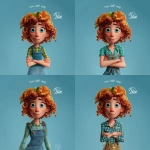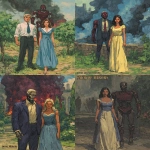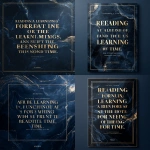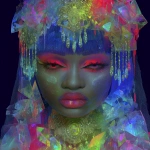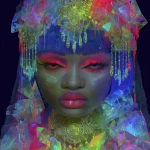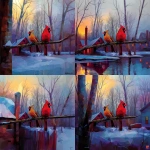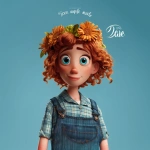Explore the Best AI Image Gallery
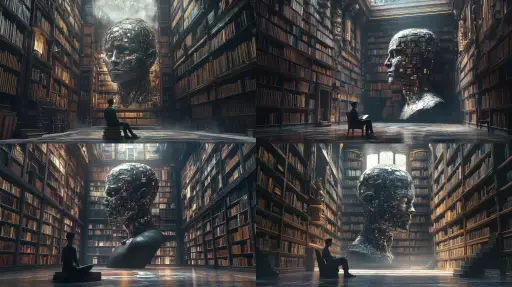
Quantum Creativity: Where Quantum Computing Meets the Artistic Frontier
The realm of creativity is poised for a seismic shift as quantum computing emerges from the laboratory and into the spotlight. This revolutionary technology, capable of performing calculations beyond the reach of classical computers, holds immense potential to reshape artistic expression, design, and innovation across diverse creative industries.
Quantum Leaps in Artistic Expression
Imagine artists wielding quantum algorithms to generate mesmerizing visual art, compose breathtakingly complex musical scores, or sculpt intricate three-dimensional models with unparalleled precision. Quantum computings ability to simulate complex systems and explore vast solution spaces empowers artists to push the boundaries of imagination and create works that transcend traditional limitations.
- Generative Art: Quantum algorithms can analyze massive datasets of artistic styles, historical trends, and user preferences to generate novel and captivating artworks. Imagine AI-powered tools that co-create with artists, suggesting new color palettes, compositional structures, or even entire concepts.
- Interactive Experiences: Quantum computing can enable immersive and responsive interactive art installations. Audiences could interact with quantum simulations, influencing the artworks evolution in real time through their movements or choices, fostering a truly collaborative artistic experience.
- Personalized Art: Imagine algorithms that analyze an individuals emotional state, preferences, or even genetic predispositions to generate personalized artworks tailored to their unique tastes and experiences. Quantum computing could usher in an era of art that is deeply personal and meaningful.
Revolutionizing Design with Quantum Precision
The impact of quantum computing extends far beyond the realm of fine arts. Design industries, from fashion to architecture to product development, stand to benefit from its unparalleled computational power.
- Material Science Breakthroughs: Quantum simulations can accelerate the discovery of new materials with unique properties—lighter, stronger, more durable, or even self-healing—revolutionizing the design of everything from aircraft to textiles.
- Optimized Designs: Complex optimization problems that plague designers can be tackled efficiently by quantum algorithms. Imagine optimizing architectural structures for maximum energy efficiency, creating products with minimal waste, or designing intricate mechanical systems with unprecedented precision.
- Virtual Prototyping:** Quantum-powered virtual reality and augmented reality environments could allow designers to experience and test their creations in realistic simulations before physical production, saving time, resources, and reducing the environmental impact of prototyping.
Ethical Considerations: Navigating Uncharted Territory
As with any powerful technology, the integration of quantum computing into the creative industries raises important ethical considerations:
- Bias and Fairness: Quantum algorithms trained on biased data can perpetuate existing societal biases, leading to discriminatory or unfair outcomes in artistic creations or design decisions. It is crucial to ensure algorithmic fairness and mitigate bias at every stage of development.
- Intellectual Property: The question of ownership and copyright arises when AI systems, powered by quantum algorithms, generate creative works. Establishing clear legal frameworks for intellectual property rights in the age of quantum creativity is essential.
- Accessibility and Equity: Access to quantum computing resources should be equitable, ensuring that individuals and organizations from diverse backgrounds have the opportunity to benefit from this transformative technology and contribute to its development.
Future Trends: A Quantum Canvas of Possibilities
The convergence of quantum computing and creativity is still in its nascent stages, but the future holds immense promise:
- Quantum-Powered Collaboration Platforms: Imagine platforms where artists, designers, and engineers from around the world can collaborate seamlessly using quantum simulations, shared creative spaces, and AI-powered tools to co-create groundbreaking projects.
- Personalized Artistic Education: Quantum learning systems could tailor educational experiences to individual needs, providing personalized feedback, adaptive challenges, and innovative approaches to artistic skill development.
- Quantum Storytelling: Immersive narratives powered by quantum simulations could transport audiences to entirely new worlds, blurring the lines between reality and imagination. Imagine interactive stories where choices have tangible consequences, shaping the narrative and creating truly unique experiences.
The fusion of quantum computing and creativity is poised to unlock a universe of unprecedented artistic expression, design innovation, and storytelling possibilities. As we venture deeper into this quantum era, the canvas for human imagination expands beyond limits previously thought imaginable.

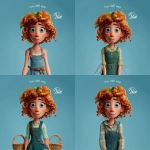
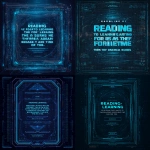


](https://images.ai-img.art/thumbnails/150/60973df1d727dbbf8e6922b7e4836814ab6012106eb9dcfe99aea7aec15f3710.webp)

](https://images.ai-img.art/thumbnails/150/1202074d0d60b08b64d0f91f36468608aaac200a02b721cc8e6d8ec8a908432c.webp)
](https://images.ai-img.art/thumbnails/150/184b4b030e30be0a6d51b544226cb4cf2271977814d935d3aaa2b7529355b3b7.webp)

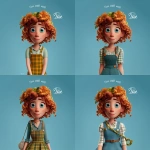
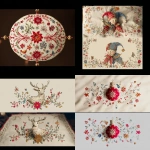



](https://images.ai-img.art/thumbnails/150/26c16e4f635deee86633de398088ca98d9bb748d6e7601436b07e882fab236cb.webp)

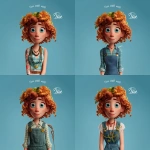

](https://images.ai-img.art/thumbnails/150/e6a179db327f0374ec327d0fdab48ac1f2dc47123eed103b0a41ed346280d07d.webp)
](https://images.ai-img.art/thumbnails/150/655229c40961cb7ff5abd4b4190e02c94ea1a961106e7547a562649c945268be.webp)




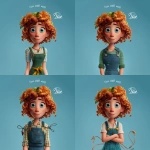
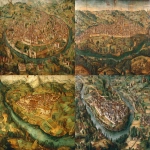




](https://images.ai-img.art/thumbnails/150/6c909fd6d38caac6572b592dd97831deb7d6562bba142798574677582676dfc1.webp)


